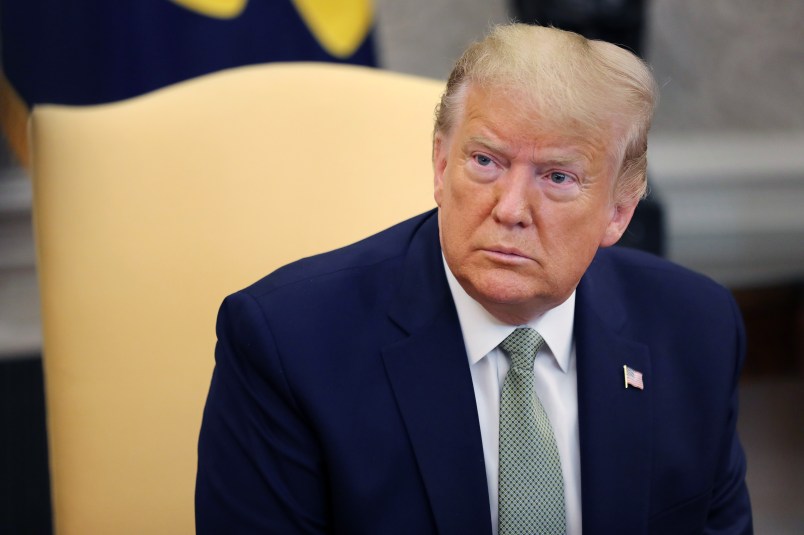President Donald Trump officially declared the COVID-19 outbreak to be a national emergency on Friday afternoon after weeks of downplaying the disease.
“I am officially declaring a state of emergency,” he said in a press conference front of the White House. “Two very big words.”
The President said the move will grant up to $50 billion dollars in funding. He also announced that he would be waiving interest on federal student loans indefinitely and that the Energy Department would be buying large quantities of crude oil “at a very good price” for storage.
He claimed that “helping our oil industry” would save taxpayers “billions and billions of dollars.”
“We’ll remove or eliminate every obstacle necessary to deliver our people the care that they need and that they’re entitled to,” he said. “No resource will be spared, nothing whatsoever.”
Trump quoted doctors apparently telling him that the disease could “wash through” over the next several weeks.
“‘It will flow through.’ Interesting terms, and very accurate I think you’re gonna find in a number of weeks,” he said.
But even as he was giving his speech, Trump kept shaking the hands of the business leaders and health experts behind him as he was introducing them to the podium. One executive, Bruce Greenstein of LHC Group, opted to bump elbows with the President.
Trump stayed on the defensive throughout the press conference, saying he did not take responsibility “at all” for the administration’s lagging test system.
When PBS Newshour reporter Yamiche Alcindor pressed him on his refusal to own up to his administration’s botched response to the outbreak, including the fact that he had disbanded the National Security Council’s pandemic office before the disease struck, Trump complained she had asked a “nasty question.”
He then claimed he had nothing to do with those staffing cuts, saying “I don’t know anything about it.”
During the Q&A portion of the press conference, Trump tried to portray his response to the coronavirus as superior to the Obama administration’s response to the swine flu outbreak, as he had done earlier in the day on Twitter.
“They had a very big failure with swine flu. Very big failure,” he said, then had the reporter cut off as she was pointing out that the Obama administration had had a million people tested for the swine flu at this point.
Senate Minority Leader Chuck Schumer (D-NY) said in a statement that he was “pleased” by Trump’s decision, but warned the President not to abuse his power.
“As other steps are considered, the president must not overstep his authority or indulge his autocratic tendencies for purposes not truly related to this public health crisis,” said Schumer.
At 4 p.m. ET, the S&P 500 closed up more than 9% as Trump was making the announcement.
Trump finally made the declaration amid growing pressure from states urging for federal assistance. The President was reportedly reluctant to do so because he was worried that such a declaration would undermine his repeated claim that the coronavirus was less dangerous than the flu.
The administration had failed to provide clear communication on the outbreak to state leaders or a sufficient number of testing tools to state and local health care workers







I just heard the beginning of his announcement on the radio. He pronounced it the “caronan” virus: He couldn’t get through the first goddamned sentence without fucking it up! It’s probably just me but this breathtakingly stupid son-of-a-bitch is not inspiring confidence.
Then again, perhaps he hasn’t heard people reference it — and pronounce it correctly — enough to master the name.
He looks feverish.
He’s a mess. Sputtering through reading the speech he still can’t make any sense. He doesn’t understand what he is reading and it shows. He’s a joke.
Big words:
N A T I O N A L
E M E R G E N C Y
Be afraid, be very afraid.
Look - visual aids!
Very big words for Dumbo Trump and preschoolers. Not so much for everyone else.